Keeping your batteries charged over winter
Don't ignore your RV batteries over the winter. You'll be sorry if you do!
Hi Mike,
I really enjoy your YouTube videos and website. Thank you for all your great work on behalf of of everything electrical in our RVs. I live in Florida and this winter, I am planning to keep my RV with 30-amp service connected to 15-amp power to keep the batteries charged and keep the wifi running. I have two 6-volt lead acid golf cart style batteries wired in series. My converter is an old-style three-phase converter/charger (bulk, absorption, float) made by Cheng WFCO.
The run from the RV to the power outlet is about 40 feet. I am using a 25-foot Camco 30-amp extension cord with 10-gauge wiring connected to our rig’s 25-foot shore power cord to make this run. I have put my Southwire Surge Guard Model #34931 on the line and found no faults. Everything is working fine.
I have three questions:
I would like to replace the shore power cord and the 25-foot Camco extension with one 50-foot extension cord. Do I need a 10-gauge cord or can I get by with a smaller gauge extension cord (at lower cost) to make this run?
Do I need to attach a robust surge protector like the Southwire Surge Guard Model #34931? Or can I get by with a lower cost surge protector from Southwire or other reliable provider? The pedestal-based surge protector is the only surge protection I have for the entire rig.
Is there anything else I should consider as I set up this battery charging system? I will, of course, check the fluid levels in the battery every month to make sure that the constant charging doesn’t boil off all the water in the cells.
Thanks —Stuart
Dear Stuart,
Great questions, all. And I have answers that I think will make you happy and keep your RV batteries healthy.
Answer #1: Extension cord size
Since your charging system only requires 1 or 2 amperes of current at 120 volts, you certainly don’t need a 10-gauge extension cord rated at 30 amps. However, while you could get away with a cheap orange cord from a big box store that is only rated for light duty, I would get a heavy-duty 50-ft. contractor grade cord with 12-gauge conductors rated for 20 amps.
The 20-amp circuit breaker in your house will trip to protect that 12-gauge cord from overheating just in case you do turn on something in your RV that requires a lot more power than a charger. Plus, it’s a lot cheaper and easier to run than a 30-amp extension cord.
Answer #2: Surge protector types
Since you don’t have anything else on other than a battery charger, I would think that a basic “surge-only” protector from Southwire (or any other quality manufacturer) would be sufficient. Of course, if you’re planning on leaving any of your RV’s electrical system on during storage, I would recommend an EMS/advanced surge protector from a manufacturer like Southwire.
However, you should still check your RV for a hot-skin voltage after plugging in since it’s possible that the house outlet you’re connecting to has lost its ground/bond connection.
Answer #3: Other things to think about
Part A: Since you have FLA (Flooded Lead Acid) batteries, I would consider adding an automatic waterer like the Flow-Rite unit I reviewed a while back.
You only need to pour water in one place monthly, and it’s automatically distributed to all of the cells at just the right level. Makes watering your batteries as easy as watering your begonias.
Part B: I would also recommend that you get a modern float charger such as one made by Battery Tender. I’ve seen a number of older 3-way chargers fail and boil out the batteries in a number of days.
You can likely get by with a very small one that will keep your batteries healthy and perfectly charged. In that case, turn off your charger/converter, turn your battery power switch OFF, then connect the battery float charger directly across the two batteries in series. That’s the safest and best way I know to do this.
Let’s play safe out there… Mike

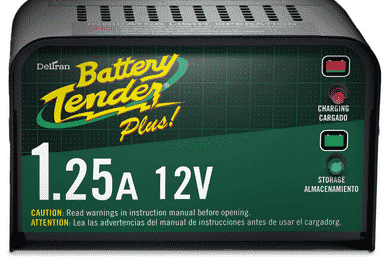



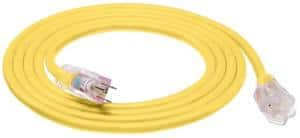
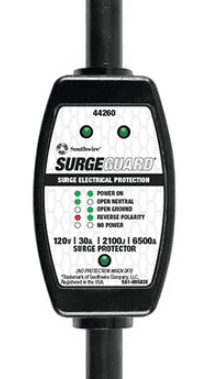
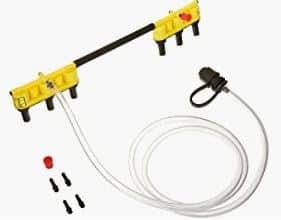
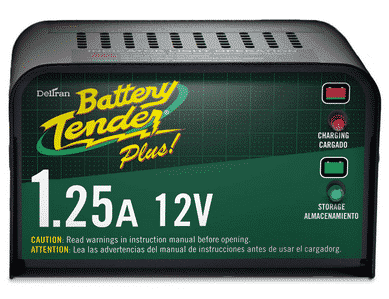

You are correct for Lithium batteries which typically only lose 1% of their charge per month, but Flooded Lead Acid batteries can easily lose 10% to 20% of their charge per month. So FLA batteries can go below 50% SoC over the winter. A battery tender is still the best way to keep your batteries healthy over winter.
For airstream specifically or in general? If Airstream, I know Dan Snyder pretty well (we drove in a 700 HP Aston Martin together at Lime Rock)